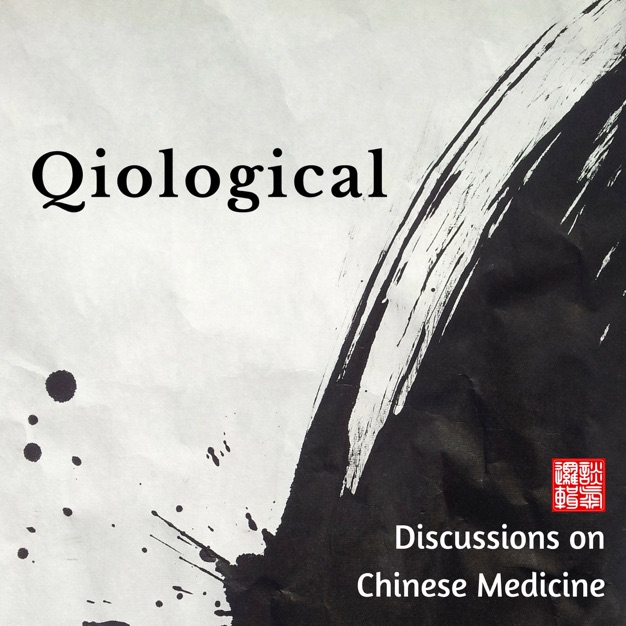
Dialogues on Applied Channel Theory
Wang Ju-Yi's Applied Channel Theory Research Center
Applied Channel Theory (經絡醫學 jīng luò yī xué) is an approach to acupuncture rooted in the dual research threads of classical texts and modern clinical application. Developed by Dr. Wang Ju–yi over 50 years in Beijing clinics, hospitals and research institutes, it involves the rigorous combination of theory and diagnostic technique. In addition to channel examination, Applied Channel Theory is a comprehensive system that includes channel theory, methods of channel diagnosis, the nature of acupuncture points, and various treatment methods. Dialogues on Applied Channel Theory is a series of discussions on Dr. Wang Ju-yi's medical system hosted by his official apprentices -- Yefim Gamgoneishvili, Jason Robertson, Nyssa Tang, Mei Li and Jonathan Chang. Conversations will cover a wide range of topics related to Applied Channel Theory, from clinical cases, to methods channel examination and deeper discussions on channel theory. This group is intended for licensed TCM practitioners and students at accredited TCM institutes. This podcast is not meant to be a substitute for professional medical care. Treatments described herein are not intended for self-medication or treatment by those who lack training in Traditional Chinese Medicine. Dialogues on Applied Channel Theory, its hosts and guests are not responsible for any injury or damage that may result from the improper application of information from the podcast. www.channelpalpation.org
- 33 minutes 42 secondsEpisode 56: Regulating the pivots
In this episode, Jonathan Chang and Nyssa Tang discuss some recent Shao Yin/Shao Yang cases where the channel changes made them rethink the pathophysiology and location of the disease. They discuss their evolving understanding of the inter-related Qi dynamics in these two systems and how symptoms manifest when they are dysregulated.
3 November 2024, 2:00 am - 31 minutes 43 secondsEpisode 55: Treatment of Post-Stroke Shoulder and Hand Syndrome
Jonathan talks to Dr. Meng Xiao-nan from the Huguosi TCM Hospital about his recent clinical research on the treatment of post-stroke shoulder and hand syndrome. His research studied the use of Applied Channel Theory, such as channel palpation to achieve more precise diagnosis, while also applying Dr. Wang’s methods of acupuncture and different massage techniques for more effective results.
17 September 2024, 1:00 pm - 32 minutes 4 secondsEpisode 54- A Tale of Two Xi/郄
In this episode Nyssa Tang and Jason Robertson discuss two less-often remembered xi-cleft points. KI-8/交信 /jiāo xìn is the xi cleft of yin qiao vessel. KI-9 筑宾 /zhù bīn is the xi cleft of yin wei vessel. Dr. Wang's experience with these points is discussed as are clinical cases from Nyssa and Jason.
7 August 2024, 4:00 am - 33 minutes 31 secondsEpisode 53 Cardiology and Constraint in Rothenburg
In this episode, Jason Robertson and Jonathan Chang discuss his recent trip to teach at the yearly international congress in Rothenburg Germany. Jason asks Jonathan about his presentations on cardiology and the concept of 'constraint' (鬱 yù). For those interested in diving deeper into Jonathan's presentation, see his article here
12 June 2024, 12:00 pm - 30 minutes 47 secondsEpisode 52: The Importance of the Primary Symptom (主癥 zhǔ zhèng)
In this episode, Yefim Gamgoneishvili and Jason Robertson discuss the centrality of placing a 'primary symptom' (主 症 zhǔ zhèng) at the heart of the diagnostic process. Dr. Wang Juyi would often emphasize that the careful choice of a primary symptom was the crucial first step in the process of perceiving symptom-pattern-structure (症候结构 zhèng hòu jié gòu). While many students and practitioners learn this concept early in their training, we all can make the common clinical error of diffusing the effects of acupuncture by needling single points for single symptoms.
16 May 2024, 2:00 am - 34 minutes 48 secondsEpisode 51: Treatment of Acute Knee Pain
In this episode, Yefim and Jonathan discuss the treatment of acute knee pain. Yefim shares his general approach to the treatment of this type of disorder, from treatment methods to diagnosis with the use of channel palpation.
6 April 2024, 4:00 pm - 30 minutes 38 secondsEpisode 50: A Case of Mysterious Belching
In this episode Jonathan shares a surprising belching case where channel palpation changed the course of his diagnosis and understanding of the patient’s physiology. He and Nyssa also discuss how Dr. Wang differentiated burps, the P6/SP4 point combination and its many uses.
28 February 2024, 2:00 pm - 30 minutes 10 secondsEpisode 49: Palpation and Wen Jing Tang
In this episode, Jonathan Chang and Jason Robertson discuss a case which shines a light on the interesting role channel palpation might play in Chinese herbal medicine. What seemed like a fairly straightforward gynecological case using Wen Jing Tang (温经汤) offered potential insight into the Yang Ming system. One of Dr. Wang's hopes was to integrate channel palpation more methodically into Chinese herbal medical diagnosis and strategy. To that end, Dr. Wang used herbal formulas in some of his clinical cases but felt that the work was not finished. We're hoping that those listening might find ways to build experience using this approach to evaluate the mechanisms of formulas in their clinics.
2 February 2024, 3:00 am - 33 minutes 7 secondsEpisode 48: Qi in the Channels
In this episode Jonathan Chang and Jason Robertson have a dialogue on the concept of qi in the channels. Conclusions are difficult but the idea that there is a physiological process (or connectivity/通/tōng) taking place within the anatomical spaces of the acupuncture channels was a foundational concept for Dr. Wang Juyi. Questions such as "how might think about the effects of acupuncture needles on the local anatomy" and "what kind of concepts did Dr. Wang use to explain qi in the channels" are considered. In any case, a conception of acupuncture without a serious engagement with these concepts may lead to less effective clinical applications.
16 November 2023, 5:00 pm - 26 minutes 40 secondsEpisode 47: The Importance of Patterns- A Case of Labor Induction
In this episode, Jonathan Chang describes to Jason Robertson interesting cases from his recent teaching in Spain, Poland and Canada. In the process, a discussion arises regarding the importance of focusing on a 'chief complaint' or 'primary symptom' (主症 zhǔ zhèng) in order to construct a 'symptom-pattern-structure' (證候結構 zhèng hòu jié gòu). For much more on diagnostic strategy, please see/download Jason and Jonathan's article from The Lantern - Home | The Lantern
3 October 2023, 1:00 am - 31 minutes 4 secondsEpisode 46: A Discussion of the Yin Qiao Vessel
In this episode, Yefim and Jonathan discuss the extraordinary vessels, with a focus on Dr. Wang’s understanding of the Yin Qiao. Clinical application of KI-6 to regulate this vessel is also described.
1 August 2023, 3:00 pm - More Episodes? Get the App
Your feedback is valuable to us. Should you encounter any bugs, glitches, lack of functionality or other problems, please email us on [email protected] or join Moon.FM Telegram Group where you can talk directly to the dev team who are happy to answer any queries.
 Botanical Biohacking
Botanical Biohacking
 Qiological Podcast
Qiological Podcast
 On Being with Krista Tippett
On Being with Krista Tippett